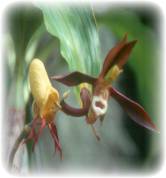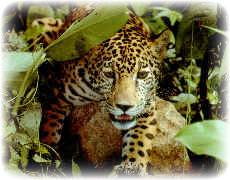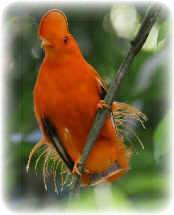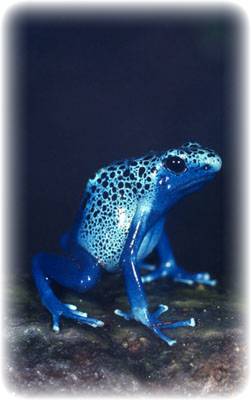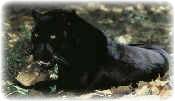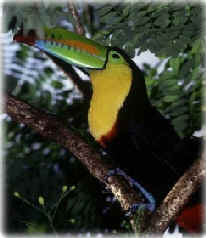|







| |
Table of Contents
|
|
Suriname
 
|
|
|
|
The
Republic of Suriname, since 25th November 1975. Is located on the
North coast of South America between 2 and 6 degrees north of the
equator. Suriname is bordered by Guyana in the West, Brazil in the
South, French Guiana (Overseas department of France) in the East and the
Atlantic Ocean in the North. With a land area of
163,820 km2
and a human population of nearly 500,000, Suriname is one of the
less densely populated areas in the world.
Capital city: Paramaribo
Back
to the top
|
|

Flag
of Suriname |
 Map
of Suriname |

Coat of Arms |
|
|
|
|
Suriname was discovered in 1593 and shortly occupied by
the Spaniards. Shortly thereafter the Dutch made an unsuccessful attempt
to colonize Suriname. Suriname received the name "The Wild
Coast", because of the many dangers at the time of these
occupations, which made any attempt to occupy the land unsuccessful.
Till 1650 there was no successful colonization of Suriname. It was 1650
before the first successful European settlement was established by English
colonists from Barbados.
In 1662 a group of Jewish immigrants from Brazil settled in Suriname and
established flourishing sugar cane plantations.
In 1667 Suriname was conquered for the Dutch throne.
Those days Suriname was a flourishing plantation colony producing coffee, sugar,
cacao and rubber. The labor on these plantation was done by slaves from
Africa of which many fled the plantation and established settlements in
the remote interior behind the rapids and mountains to live as free men
and women.
From the interior these free slaves carried out a rebellion against the
plantation and slave owners, to free more slaves. These runaway slaves
are now known as the Maroons.
In 1799 Suriname was re-conquered by the English. During
their reign the trade in slaves from Africa was stopped in 1806 and was
forbidden from then on.
In 1863 Slavery in Suriname was abolished under Dutch reign.
The slaves were obliged to work on the plantation for another ten years,
though they were free. From 1873 on contract laborers from India
an Indonesia (Java) were brought to Suriname to continue the work on the
plantation.
In 1975, November 25th
Suriname became independent from the Dutch. Even
after gaining independence from the Netherlands in 1975, Suriname
maintains strong ties with the Netherlands. Approximately 300,000 to
350,000 Dutch from Surinamese origin live in the Netherlands. This is
almost the same number of inhabitants Suriname has.
The Republic of Suriname is a member of the United Nations (U.N.), the
Organization of American States (OAS), the Caribbean Community (CARICOM), the
Association of Caribbean States and a member of the African, Caribbean
and Pacific Nations (ACP).
Suriname
is one of the least disturbed and least explored
countries on the planet and is host to an abundant diversity of flora
and fauna. Species such as the endemic blue poison dart frog and the
cock-of-the rock have attracted scientists from all over the world.
Suriname is waiting to be explored! There is little tourism
infrastructure in Suriname except for a few tour operators and hotels
offering services mostly to the Dutch.
Back
to the top
|
|
|
Suriname has a tropical climate were the sun always
shines, yes even in the rainy season. We have four seasons (a double dry
season and a double rainy season). The shortest rainy season is from
December till February, followed by the short dry season ranging from February till
April, subsequently we have the long rainy season from May till August, followed
by the long dry season from August till December. The driest months are
September and October.
Sometimes we experience heavy rains with minimal flooding of the
riverbanks in the interior.
The average temperature per
year in Paramaribo is 27.3 °C. The highest average maximum
temperature per day is measured in October ( 33.0 °C), the lowest in
January (29.8 °C). The average minimum temperature per year is 23 °C.
Humidity: 80%
The winds are mostly weak from east to west, with
velocities of 1 - 2 m/s
The climate in the interior doesn’t differ much
from the capital city.
Back
to the top
|
|
|
|
|
Suriname
is part of the Guyana Shield, a two-billion-year-old, Pre-Cambrian
formation. For countless millennia, the Guyana Shield has supported a
great diversity of flora and fauna. The land is dominated by mighty
rivers which provide essential highways into the rainforest and jungles
of the interior, which remain virtually untouched by man.
The
landscape could be roughly divided into three parts:
-
A Coastal plain, approximately 100 km in the West and 26 km in the
East wide. Scattered in this area we find the wetlands in the
form of swamps, the swamps are separated from each other by ridges.
In the West we have a large area of wetlands known as the "Bigi
Pan" , very popular by birdwatchers (these wetlands are the
natural breeding grounds for shrimps and a lot of fish species, which
makes it an excellent feeding ground for al kinds of birds, also the
trekking birds from the North)
-
The
Lowlands, an area wide ca. 40 km in the West and ca. 15 km in the East
, borders the Coastal area. Scattered in this area we find
Savannahs.
-
The
Highlands, part of the highlands of the Guiana's, a mountainous area
which covers almost 80% of the surface of Suriname. This area
is almost entirely covered by pristine Tropical rainforest. The highest peaks are
1080 m and 1280 m.
|
All the rivers originate in the highlands and flow
from South to North into the Atlantic Ocean. The largest rivers are the
two border rivers, the Corantine in the West and the Marowijne in the
East. These rivers are scattered with numerous islands. The width at the
mouth is ca. 10 km. Al the rivers are sailable
in the coastal area. In the rainy season the rivers flood the swamp
area. Other large rivers are, from West to East, the Nickerie
river, the Coppename river, the Suriname river, the Saramacca river and
the Commewijne river. The Cottica river, a medium sized river, branch of
the Commewijne river is our deepest river and therefore sailable for
small sea vessels till the port of the small town Moengo.
There
where the Lowlands borders the Highlands and further South we find
numerous rapids in the rivers. Here the rivers are only sailable by dugout canoes
with or without outboard motor, managed only by experienced indigenous people and
maroons.
|
Back
to the top
As part of the wider Guyana Shield, a
region which is one of the least disturbed tropical wilderness expanses
remaining on Earth, Suriname has an entirely tropical vegetation.
Coastal
The vegetation zones are
parallel with the coastal line. The vegetation at the coast is
dominated by Mangrove forest.
On a strip extending ca.
50 km land inwards we find dispersed in the landscape swamps, surrounded
by swamp vegetation which is dominated by grass of which some reach
heights of some meters (some characteristic types: Cyperus giganteus,
Cyperus articulatus). Some swamps are covered by a floating grass
deck, characteristic types are Lagenocarpus guianensis and Leersia
hexandr. The swamps are separated by sand ridges covered by lowland
rain forest in which we find trees like the Triplaris surinamensis
and palms.
Savannah
Between
approximately 50 and a 100 km land inwards we find the savannahs. The
soil of the savannahs is sparsely covered by vegetation. The vegetation
is dominated by grass (Andropogon
and Pennisetum species) bushes and palms.
Tropical
Rainforest
From
ca. 100 km land inwards the landscape is dominated by the jungle. As part of the Amazon Tropical rainforest, a natural -
old growth - forest in the humid tropics which have been able to develop
undisturbed for a very long time. A highly complex biotic community
comprising an unparalleled variety of plant and animal species living in
a close relationship. The forest includes ca. 5000 species of plants,
with lots of endemic species (species that occur only in a
particular region and nowhere else) .
The rainforest is rich in
vines, lianas and epiphytes (esp. the Orchid
and Bromeliad family)
More then 90% of the
surface of Suriname is covered by pristine rainforest. There are five
layers of vegetation in this jungle. Where untouched by man,
jungle trees rise from buttress roots to heights of 60
meters. Below them smaller trees produce a canopy so thick
that little light reaches the jungle floor. Seedlings struggle
beneath them to reach light, and masses of vines and lianas twine up
to the sun. Ferns, mosses, and herbaceous plants push through a
thick carpet of leaves, and a great variety of fungi grow on leaves
and fallen tree trunks. Because of the lack of light on the jungle
floor, there is little undergrowth to hamper movement, but dense
growth limits visibility to about 50 meters.
In Suriname all kinds of
exotic flowers bloom throughout the year, we name the Heliconia.
Back
to the top
Suriname is
the paradise for those who want to enjoy Wildlife
especially the birdwatchers.
Mammals
The fauna in Suriname is not extensively studied yet.
From what we know, the mammals comprise somewhat 140 species, amongst
which are 8 monkey species including (red howler
monkeys, Capuchins, Spider and Squirrel monkeys); 14 Predators including the Jaguar,
Puma, Ocelot,
and two species of Fish Otters including the giant Fish Otter; 65 bat species, ca. 25 rodent species
(Capybara, Agouti, etc.). Three species of Anteaters,
three species Sloth's, five species of Armadillos.
The South American Tapir, two species Peccary's,
three Deer species, some Marsupials ( about ten species of Opossums), in the coastal area
we have river Dolphins and one species of Manatee (sea-cow).
The
Asiatic mungo (a mongoose) was imported at the beginning of the 20th
century as a biological "pest" control against rats and the
bushmaster, a venomous snake in the sugar cane fields. The spreading of
those animals remained limited to the above mentioned area.
Birds
In Suriname we have more then 600 bird species including some endangered
species; 60 species of trekking birds (esp.
the wading birds from
the North).
Some
typical birds are: the Flamingo
(scarlet ibis), King vulture, black vulture, Woodpeckers, Hoatzin,
Black curassow, The red throated caracara, Toucans, parrots
including various Macaws, Humming birds, Motmot, the famous Cock of the
Rock and the rare Harpy eagle.
Amphibians and reptiles
Amphibians and reptiles are
represented in great numbers: lizards, Pipa or Surinam toad, Surinamese
frog, Dart poison frog (the blue poison dart frog is endemic to
Suriname, found no where else in the wild on earth), black caimans, iguanas, boa constrictor, anaconda; the bushmaster and rattle
snake are the two most venomous snakes in Suriname; land-, freshwater
- and the famous sea turtles).
|
Fish
The Surinamese waters are
inhabited by numerous fish species, a true paradise for the
angler.
A special mention needs to be made for the Piranhas, Electric
eel, Freshwater stingray and the cichlids including the Peacock
Bass, the largest member of the cichlid family in the Amazon
Basin. Many consider this fish to be the toughest fighting fish
in the world! It is extremely aggressive and acrobatic when
hooked.
|
Lower
animals
The lower animals are represented by: the giant centi-
and millipedes, spiders, snails and the countless insects, popular
butterflies like Morpho, and fireflies.
Nature
Conservation
Suriname was one of the first countries in South
America to establish a nature reserve system.Our nature conservation systems is the best in South America. The
establishment of the vast - about 16,000
square kilometers - Central Suriname Nature Reserve (CSNR) has put
Suriname in the conservation spotlight again. This reserve is on the
world heritage list of the UNESCO. Currently, about 12% of Suriname has a protected status, while additional areas await formal
recognition as nature reserves.
Hunting is very well regulated in Suriname. By means of
a combined system of quotes, nature reserves and prohibitions the sea
turtles are being protected. They use our beach to lay their eggs. Those
sea turtles are a major tourist attraction.
Suriname’s
protected areas offer tourists: vast areas of intact tropical forests
and streams, unique savannah and highland ecosystems, as well as
extensive wetlands and beaches.
Some popular nature reserves
which are visited by nature tourists are: the Galibi beaches where the
sea turtles lay their eggs, the Raleighvallen-Voltzberg, the Tafelberg,
the Sipaliwini savannah and Browns berg nature reserves.
Back
to the top
|
|
|
|
|
The population
The Surinamese
people are known in the world for their peacefulness and hospitality.
Inhabitants: ca. 500,000
The
inhabitants of Suriname are concentrated in the coastal area. Almost half of the population,
ca. 200,000 lives in the Capital
city Paramaribo and within a
radius of 35 km of this city. The rest of the population lives in
small towns and villages along the coast and rivers in the interior.
In Suriname we have a great ethnic variety:
-
The Afro-Surinamese, descendents of African slaves;
within this group the Maroons, descendents of runaway slaves, are
regarded as a separate ethnic group;
-
The Indians, descendents of
contract laborers from India;
-
The Javanese, descendents of the contract
laborers from Java, Indonesia, they form a unique culture found nowhere else
in the Americas and Caribbean.
-
The Chinese and
-
The Amerindians, the indigenous people
of Suriname
-
The Europeans (esp. the Dutch),
-
The Lebanese and Anglo-Americans.
-
A
variety of mix types of the different ethnic groups
|
|
For
centuries the Maroons and Amerindians lived in the
interior, more or less separated from the rest of the society. This gave
those groups the opportunity to develop and conserve an exotic culture
form, unspoiled by the influences of modern man. Those cultures are a
major attraction for tourists now a days.
The Amerindians, the indigenous
people of Suriname, who lived in and from the jungle long before the "New
World" was discovered are masters in jungle survival.
Centuries ago West
Africans, brought to Suriname to work as slaves on the
plantations, escaped from these plantations and became the Maroons. Most of the time they fled
empty handed and on bare feet into the jungle. During their struggle
to stay alive in the jungle, they developed numerous survival
skills in which they became proficient. It is amazing to
observe how much of the traditional West African culture these
Maroons have preserved .
|
|

|
|
The Maroons, descendents of runaway
plantation slaves live in the interior (tropical rainforest) in different tribes. The
following six tribes could be distinguished:
-
The Aucaners or Ndyuka's (Aucans) living along the Tapanahony, the Cottica, the Upper Commewijne
river and the Saracreek.
-
The Saramaccaners, living
along the Upper Suriname river
-
The Matuari's, living along
the Upper Saramacca river
-
The Paramaccaners, living
along the Marowijne river, down stream, near the Armina rapids
-
The Boni's living in the Lawa
delta
-
The Kwinti's, living along the
Lower Saramacca river.
As early as the first colonization
when the first plantations were built in the 1650's by the English under
Lord Willoughby the slaves from West Africa escaped into the jungle. Some
of them almost instantaneously after arrival in Suriname or shortly
thereafter. These West Africans who freed themselves from bondage
were given the name, Maroons, derived from the Spanish word Cimaron, meaning runaway cattle.
During Dutch reign the number of
escaped slaves grew only larger and larger. In 1690 there was a slave rebellion
on a plantation which culminated in the escape of a large number of
slaves.
The number of runaway slaves grew
very large in 1712 when the plantation owners sent their slaves to hide in
the jungle during an invasion lead by the Frenchman Cassard, in order to lower de
fine they had to pay, because the more slaves you owned the more you had
to pay. Almost none of the slaves returned and there was nothing the slave
owners could do about it.
Gradually the measures against the
Maroons were increased. In 1685 the reward on a Maroon was only 5 guilders
(Dutch currency at that time). In 1687 it was increased to 300 pounds of
sugar and in 1698 the reward was once again increased to 50 guilders.
After 1717 every one was free to hunt the Maroons. In 1721 the dead
penalty was introduced to punish captured Maroons. In 1730 two captured
Maroons were burned to death on the pyre.
Nevertheless the number of runaway slaves kept increasing and
simultaneously the rebellion against the slave owners.
With their raids on the plantations, the Maroons not only depleted
the plantations of their work forces but often took the lives of the slave masters,
burned down houses and crops, they also took livestock's and every thing
else they deemed useful.
Once they were grouped in the jungle they held organized attacks on a
regular basis against the plantations, due to a chronic shortage of women,
tools, weapons and often out of vengeance because of the inhumane
treatment the slaves received on the plantations. During these attacks the
plantation slaves fled with the Maroons.
Desperate, because of all their losses,
their physical shortcoming, their unfamiliarity with the jungle and in an
attempt to cause segregation within the slave and Maroon community, the
colonial army trained a group of slaves who were given freedom, to
assist the colonial army in their campaign against the Maroons. This group
was called the "Corps of Black hunters" or Redi Moesoe's
meaning, red hats named after the red berets they wore. Many of these
black soldiers joined the Maroons once they were in the jungle, adding
more to the number of Maroons.
In 1738 the number of Maroons was
estimated to be as high as 6000. This number increased to 7000 in 1786 and
8000 to 10,000 in 1863 at the abolition of slavery in Suriname.
Although the Maroons were constantly
hunted by the government army assisted by the Corps of Black hunters, they were able to establish settlements
with a very well organized structure, with characteristics similar to
their West African tribal communion.
Because of their isolation from
western society, far in interior of Suriname behind the
dangerous rapids and mountains for more then a century, the Maroon form a
reserve of old authentic African culture found nowhere else on earth.
The many well organized
raids against the plantations, the huge amount of money spent by the Dutch
government in the campaign against the Maroons, which drove the colony near bankruptcy
and the lost of many men in these campaigns without any success, brought the
slave owners to their knees to sign peace treaties with the
Maroons in the 60's of the 18th century. Since then
they were recognized as freemen by the colonists.
An attempt of the Dutch to sign peace
with the Maroons in 1748 and 1749 failed. In 1760 the Dutch were forced to
sign peace with the Aucaners (Aucans), this was the first agreement
between the Dutch government and the Maroons. In 1762 and 1767 peace
treaties were signed respectively with the Saramaccaners and the Matuari's.
Shortly thereafter a new Maroon group
was formed, the Boni's, named after their legendary leader Boni, who later
became a national hero. This new group had forced the colony in a
permanent state of war from 1765 till 1793. Eventually the Boni's were
forced to draw back over the boundary with French Guiana, the Marowijne
river, by the "corps of black hunters" from where they kept
campaigning against the slave-owners, though less frequently.
After a successful campaign of the
colonial army, assisted by the Corps of Black hunters against the Boni
group in 1793, there was a period of relatively rest in the colony. Now
and then there was a little uprising. This relative peace was disturb in
1805 due to mutiny of soldiers of the "Corps of Black hunters".
The rebellious "black hunters" mainly joined the Boni group.
The plantations incurred huge losses
and damage due to the protracted guerilla against them, which lasted
nearly a century. In addition major financial set backs as a consequence
of economic regression in Holland and the rest of Europe contributed to the
substantial decrease in number of
plantations at the end of the 18th
century.
In 1809 a new peace treaty was signed
with the Aucaners, as an update of and complementary to the treaty of
1760. After 1809 the 19th century was characterized by a gradually
increasing peaceful contact between the Maroons and the colonial
government. In 1835 new treaties were signed with the Saramaccaners and in
1837 once again with the Aucaners. In 1838 a new peace agreement was
signed with the Matuari's. In 1856 all restrictions for the Maroons
regarding their movements within the coastal region and the Capital city
Paramaribo were abolished. In 1857 for the first time in history the
colonial government paid a salary to the Upper chief of the Aucaners and in the
years thereafter also to the chiefs of the other tribes.
|
Back
to the top
Language
More then 20 different languages are spoken in
Suriname. The official language is Dutch.
The lingua franca between the different groups is the “Sranantongo”,
a locally developed language.
Religion
The variety in religion is highly congruent with the
variety in ethnic groups. The major groups are: Christianity, Hinduism
and Islam. There is also a Jewish minority. In the interior we have
Animistic minorities within the Maroon and Amerindian societies. The
majority of those societies especially the Amerindians is Christianized.
The
peacefulness of the Surinamese people is demonstrated by the peaceful
coexistence of the Muslims and the Jews, they even build their Mosque
and Synagogue neighboring each other, truly a unique scene in the world,
this is only seen in Suriname.
Culinary
The
vast diversity in cultures is reflected in our kitchen, we have a vast
variety of excellent and exotic cuisine, name it, we have it.
Back
to the top
Economy
The Surinamese economy is now for the larger part depending on mining
of Bauxite. Other important export products are rice, bananas and
timber. The development of an oil mining industry based on the recent discovery
of large oil reserves and ongoing explorations offshore and sustainable
eco-tourism, based on the rich eco-systems of the pristine Amazon jungle which covers nearly 90% of Suriname's surface, are areas
the Surinamese government is focusing on now.
Currency
The currency is the Surinamese dollar. The Euro and US dollars
are also widely accepted.
Credit cards
Some stores and the big hotels also accepts Master card and Visa
credit cards. Through the Point Of Sale (P.O.S) system, tourist are also
able to pay with their foreign pin pass in some stores.
Banking and Money exchange
There are many bank offices throughout Paramaribo and some in the
districts. Opening hours are Monday till Friday from 08:00 a.m. till
02:00 p.m.
There are numerous money exchange offices (cambio's) in Paramaribo
and districts.
Postal services
There are three post offices in Paramaribo.
Opening hours are Monday till Friday from 08:00 a.m. to 02:00 p.m. Also
available are express/courier services.
Transportation
Airport service: The airport bus and taxi
transport services are offered by qualified and authorized companies.
There is always a safe bus or taxi available at the JAP international
airport to take you wherever you want to.
City transport is covered by a variety of
taxi's and public mini buses (25 - 30 persons) which take you to practically every neighborhood
of Paramaribo. There are also busses to take you to the various
districts.
Air transport: Safe air transport with one
and two
engine airplanes, mainly to the interior is offered by authorized
companies
Transportation in the interior is solely water transport
with dugout canoes with an outboard motor, offered by the locals
Leisure
Spent your days by shopping in downtown
Paramaribo, a bustling port city, or in one of the many shopping malls,
visit one of the numerous restaurants, the palm garden (park), the Fort
Zeelandia-, the Surinaamse- or New Amsterdam museum, the Paramaribo zoo or take a daytrip to a recreation
area. At night you could go to one of the many casino's, bar dancings, discothèques
or restaurants.
Time
In Suriname we are three hours behind of
GMT.
Electric power
The
power company provides electricity with a voltage of 127V AC at 60 cycles per
second (60 Hz). In some hotels you will have access to 220 Volts.
Telecommunication
Using
prepaid calling cards which are available at nearly every store and fuel
service station, local and international phone calls can be made from
public phones which are readily recognized by the yellow cap.
You
could also use your own cellular phone if you purchase a sim card
locally at one of the many cellular phone shops. A prepaid calling card
is also needed
Internet/email:
There are numerous internet/email services available in
Paramaribo.
Weights and measures
In
Suriname we use the metric system in weights and measures.
Visa and Immigration
To visit Suriname, a visa is required. Visa Applications can be
submitted at the Surinamese Embassy or Consulate in your country.
If your vacation in Suriname will be longer than 30 days, you need to
stamp your passport within a week after arrival at Immigrations.
You need to bring along: your passport and ticket.
Airport taxes
All passengers departing from the JAP international airport, must pay
an airport tax of $25,-. This is usually already included in the price
of your ticket. Only US dollars are accepted.
International Air Traffic
The
Dutch and Surinamese airlines (KLM and SLM) offer three straight (747)
flights a week
The
Surinamese airlines (SLM) and Jamaican air offer one flight weekly,
Suriname - Miami vice versa, through Jamaica.
The
Surinamese airlines (SLM) and BWIA offer flights from Suriname to
different destinations in the Caribbean vice versa
Back
to the top
|
|
|

The
Flag of Suriname was formed by high school students on the 24th
of November 2005, one day prior to the celebration of 30 years
independence. In the surroundings you see the 17th
century buildings that characterize the historic center of the
Capital Paramaribo.
Back
to the top
|
|
Back
to the top
Back
to the top
-
The Tackle Box:
Address: Zwartenhovenbrugstraat # 229. Tel : 597-471493
-
Tomahawk Fishing & Camping Gear:
Address:
Wagenwegstraat # 71 - Paramaribo - p.o. box 614
Tel : 597-422682 or
597-421812 or 597-8857875
Fax :
597-422682
e-mail : tomahawk@sr.net
Branch at Hermitage mall unit 208 (Tel:597-530442)
Back
to the top
|
|
 Cottica
Adventures &Training Services
Cottica
Adventures &Training Services









